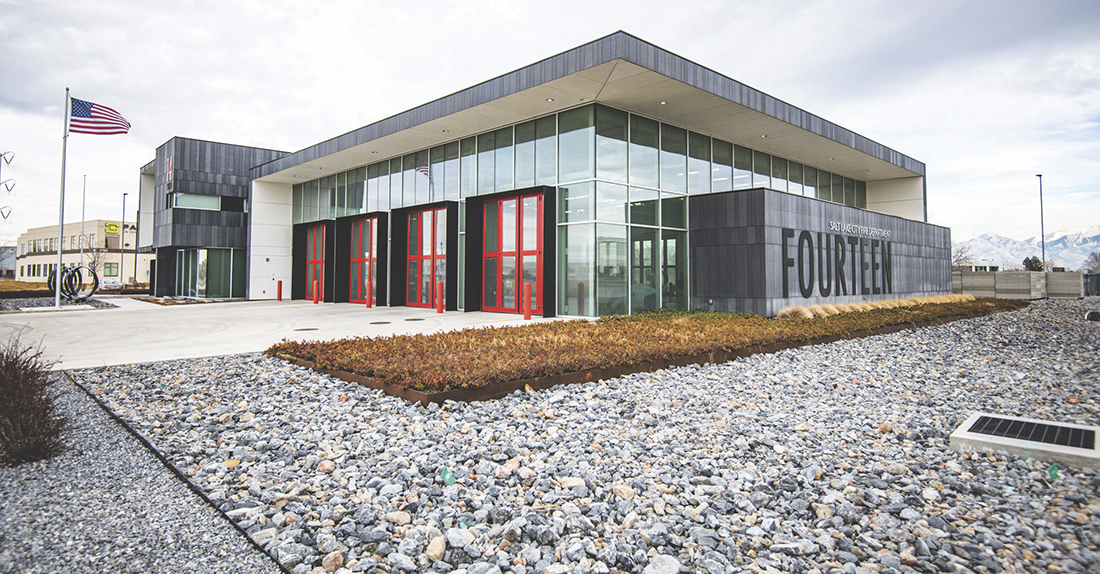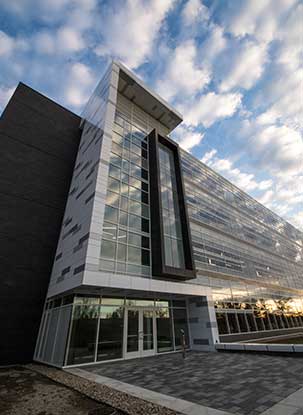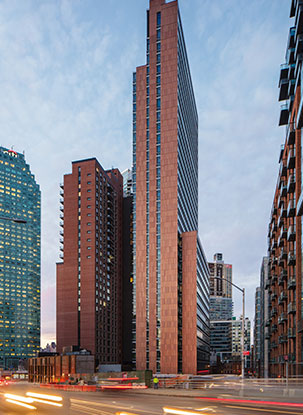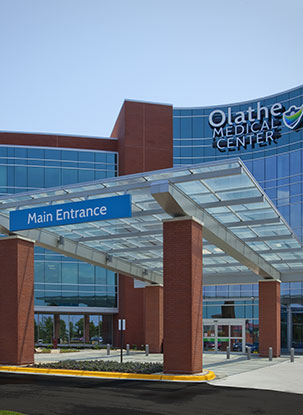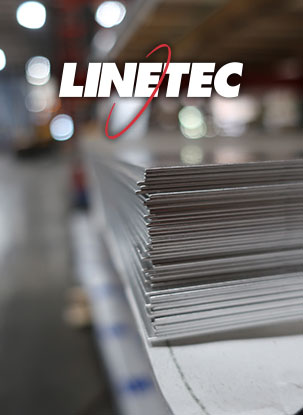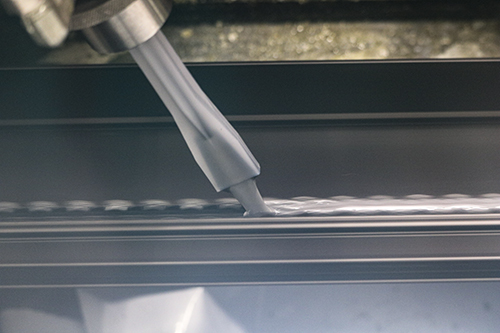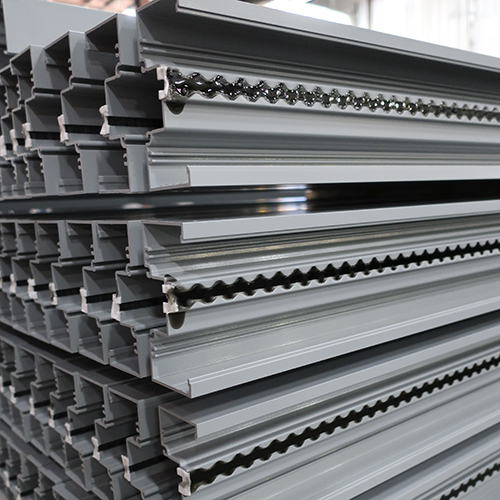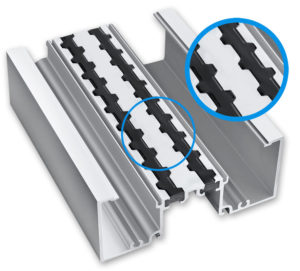Window systems provide natural light and views that allow us to maintain a connection with the outside environment, while keeping us comfortable indoors. It’s no longer tolerable to expect us to endure a system that leaves us with a chill in winter or sweating in our seats in summer. Increasingly, it’s also no longer acceptable for a building to waste energy due to low-performance glazing systems.
Thanks to manufacturers’ modern advancements, today’s fenestration systems help protect us from extreme temperatures and conserve natural resources. While high-performance glass often is the component we see first, be sure to remember the role of the frame itself.
Single source solution = more choices
As a single source solution for architectural finishing, Linetec’s services include more than painting and anodizing aluminum to enhancing the appearance and durability of your system. Manufacturers also rely on us to thermally improve their fenestration framing assemblies to achieve their project’s goals for optimal energy efficiency and comfort.
Aluminum is wonderful for its ease of fabrication and infinite recyclability, but it also is a highly thermal conductive material that rapidly transfers energy. Interrupting this transmission, we separate the interior and exterior framing members, creating a cavity, and then add an insulating barrier to reduce the thermal bridging. This improvement process, also known as “thermally breaking” a system, benefits all aluminum-framed fenestration applications – from single-family homes to skyscrapers.
We offer customers finished aluminum products with a choice of thermal barrier systems that include a polyurethane pour-and-debridge method. Our nearly 20-year partnership with Azon delivers industry-leading thermal performance to meet projects’ increasingly rigorous energy code requirements, while strengthening the structural and long-term durability of the fenestration unit.
Codes drive compliance, advance technology
Azon has provided energy-saving technology, chemicals and machinery for manufacturers of thermal barrier fenestration products since 1977. This same year, the U.S. Department of Energy was created in response to the U.S. energy crisis.
Since their introduction in the 1970s, thermal barriers “have been highly effective in helping aluminum windows, doors, curtainwall, window wall, storefront and other fenestration products meet the prevailing codes,” says Jerry Schwabauer, Azon’s vice president of sales and marketing. “As energy codes continue to become more stringent, advances in thermal barrier technology must continue.”
“Because it costs more to cool a building than to heat it, thermal barriers are important in a variety of climates,” shares Schwabauer. “In most parts of North America, code requirements are such that aluminum windows require an incorporated thermal barrier for the fenestration product to meet the energy code. New York and California have implemented some of the most restrictive codes in the United States, and efficient thermal barrier systems are required to meet these codes. Other areas are following, making thermal barriers essential in most U.S. markets.”
In addition to helping meet the required energy efficiency and desired sustainability, thermal barriers increase your fenestration systems’ contributions to condensation resistance, noise reduction and occupant comfort. The structural strength of Azon’s thermal barriers help your finished aluminum fenestration products withstand blast loads, hurricane force winds and flying debris.
Performance gained with pour-and-debridge
To gain the improved performance, Linetec strives to omit extra steps and unnecessary handling for our customers. Our full-service process starts with your finished aluminum extrusion – in your specified paint, anodize or specialty finishes. From here, we condition the interior “dog bone” shaped structural cavity to grip the thermal barrier. Depending on your needs, we either use the Azo-Brader™ to create the raised projections or the Azon Lancer™ to produce inward curving, lanced indentations.
Once the thermal cavity is prepared, we pour Azon’s two-part polyurethane into channel and let it cure. After it solidifies and the precise hardness has been verified, we remove the metal bridge from the bottom of the channel. This forms a true, thermally broken, composite extrusion with a poured-and-debridged, structural thermal barrier. The Azo-Brader and the Lancer mechanically lock the polyurethane polymer with the finished surface of the aluminum profile to ensure significantly improved adhesion.
“Azon is unique in the fact that we are the only thermal barrier provider that supplies the thermal barrier material, as well as the machinery to process the thermal barrier into aluminum extrusions,” explains Schwabauer. “This machinery is designed to operate at high production speeds to provide shorter lead times and to minimize labor expense required to process the extrusions. Azon polyurethane thermal barrier systems offer extensive die design flexibility for even the most unique extrusion designs.”
Dual cavities deliver ultra-thermal barrier
Widening the cavity in finished aluminum extrusion provides more room for a thick, insulating barrier to increase thermal performance. An additional cavity and thermal barrier in the same extrusion further improves performance, decreases measurable U-Factor and increases the condensation resistance factor (CRF). According to Azon, a side-by-side dual-cavity extrusion with a poured-and-debridged thermal barrier system provides an approximately a 20% improvement in thermal performance compared with a single-cavity using the same glass.
Tubelite Inc.’s Therml=Block® TU24000 storefront features a dual-cavity poured-and-debridged “ultra-thermal” barrier. Linetec conditions both cavities using the Azon Lancer to mechanically lock the polyurethane barrier in place, providing long-term resistance to shrinkage. Combined with high-performance glass, the thermally broken system achieves a U-Factor as low as 0.32, and a frame CRF as high as 69, as well as high acoustic performance.
“Linetec will provide excellent mechanical lock and polyurethane service for their customers to manufacture optimum performance products,” praises Schwabauer. “Manufacturers should select the thermal barrier system that best allows them to achieve the desired thermal and structural performance of their products in a cost-efficient manner.”
High-quality service supported with a warranty
As an Azon Approved Applicator, Linetec’s quality-controlled thermal improvement process follows the industry specification, AAMA QAG-1 “Quality Assurance Processing Guide for Pour and Debridge Polyurethane Thermal Barriers,” along with Azon’s proprietary recommendations. Linetec passes through Azon’s 10-year warranty when you choose the pour-and-debridge method to thermally improve your finished aluminum.
“Azon partners with Linetec and their customers in many ways to ensure the highest quality composite extrusions are designed and manufactured,” says Schwabauer. “Azon offers die review, simulation services, design assistance, regularly scheduled site visits, mechanical lock systems, training, troubleshooting, a web-based quality audit record keeping site, and monthly testing of cured polyurethane plaques and composite extrusions.”
He adds, “Azon polyurethane is designed to last indefinitely when incorporated into an aluminum frame and is considered a lifetime product. Linetec, as a single source solution provides consistently outstanding quality to meet even the highest customer demands.”
